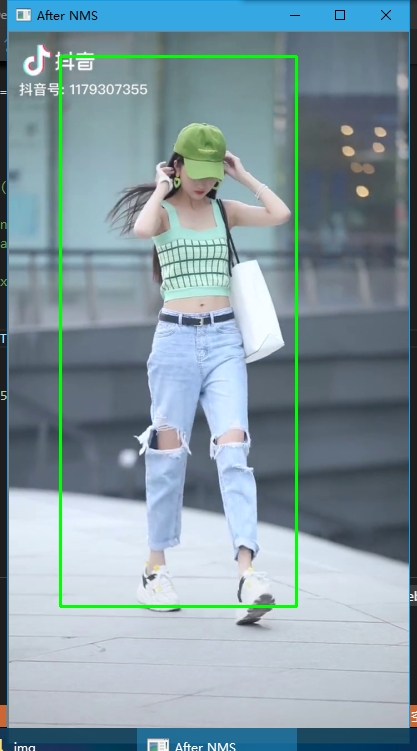
采用非极大值抑制,将重叠的框合并成一个。
# import the necessary packages
from imutils.object_detection import non_max_suppression
import numpy as np
import imutils
import cv2
# initialize the HOG descriptor/person detector
hog = cv2.HOGDescriptor()
hog.setSVMDetector(cv2.HOGDescriptor_getDefaultPeopleDetector())
cap = cv2.VideoCapture('img/test.mp4')
# load the image and resize it to (1) reduce detection time
# and (2) improve detection accuracy
while True:
ret, image = cap.read()
# image = cv2.imread('img/test5.jpg')
image = imutils.resize(image, width=min(400, image.shape[1]))
orig = image.copy()
# detect people in the image
(rects, weights) = hog.detectMultiScale(
image, winStride=(4, 4), padding=(8, 8), scale=1.05
)
# draw the original bounding boxes
# for (x, y, w, h) in rects:
# cv2.rectangle(orig, (x, y), (x + w, y + h), (0, 0, 255), 2)
# # apply non-maxima suppression to the bounding boxes using a
# # fairly large overlap threshold to try to maintain overlapping
# # boxes that are still people
# rects = np.array([[x, y, x + w, y + h] for (x, y, w, h) in rects])
pick = non_max_suppression(rects, probs=1, overlapThresh=0.15)
# draw the final bounding boxes
for (xA, yA, xB, yB) in pick:
cv2.rectangle(image, (xA, yA), (xB, yB), (0, 255, 0), 2)
# show the output images
# cv2.imshow("Before NMS", orig)
cv2.imshow("After NMS", image)
if cv2.waitKey(1) & 0xFF == ord("q"):
break